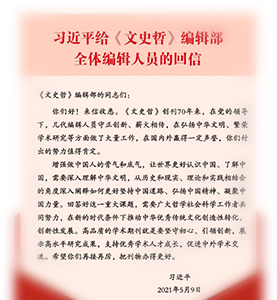冯绍祖校刊《楚辞章句》及其评点学价值
罗剑波
摘要:明万历十四年(1586)冯绍祖校刊王逸《楚辞章句》,在《楚辞》评点史乃至《楚辞》学史上地位都颇为重要。该本以王逸《楚辞章句》为底本,又借助于评点形式,吸纳了洪兴祖《楚辞补注》、朱熹《楚辞集注》有“裨益”之处,从而融三家注之精华于一本之中,这体现了校刊者冯绍祖的独特思考。该本之问世,对于进一步打破朱熹《楚辞集注》的垄断,推进《楚辞》诠释多元化走向有重要贡献和意义。冯绍祖从前世诸家著作中选取相关评语,以眉批、旁批、总评等评点形式置于该书之中,这反映了当时评点刻本的真实面貌及共同形态,但这种评点观念与文人随阅随批之批点有很大差异。冯绍祖对于评语的选择,与其对屈子、屈赋的思考和认识紧密相关。该本所确定的评点形态、评家以及评点,均对后世产生了广泛而深远的影响。
Sentences and Phrases in The Songs of Chu Collated and Printed by Feng Shaozu and Its Value on Studies of Annotation and Comment
Luo Jianbo
In 1586, Feng Shaozu collated and printed Sentences and Phrases in The Songs of Chu by Wang Yi, which was important in history of annotation, comment and research of The Songs of Chu. This edition took Wang Yi’s work as master copy, and meanwhile, absorbed the “beneficial” points in Supplementary Annotations of The Songs of Chu by Hong Xingzhu and Collected Commentaries of The Songs of Chu by Zhu Xi, thus integrated the essence of the three into one book, which reflected the unique way of Feng Shaozu. The publication of this edition was quite meaningful for breaking the monopoly of Zhu Xi’s Collected Commentaries, and propelled multiple interpretations of The Songs of Chu. Feng selected relevant comments from previous works, putting them into his edition in forms of commentary at the top or side of a page, general comment, and etc. That reflects the true feature and common form of previous editions of the commentaries of The Songs of Chu, yet Feng’s idea differed greatly with the style of casual comments over reading at that time. Feng’s choices of comments were closely related to his reflection and understanding of the man and works of Qu Yuan. The commentary forms, commentators, and concrete comments confirmed by Feng’s edition all had broad and deep impact on later ages.


